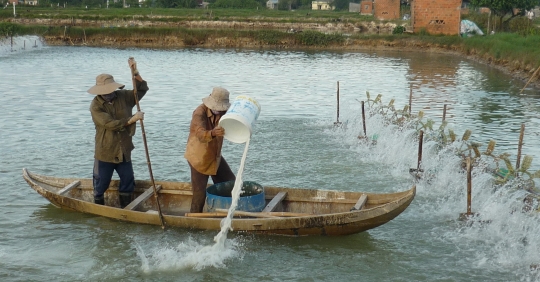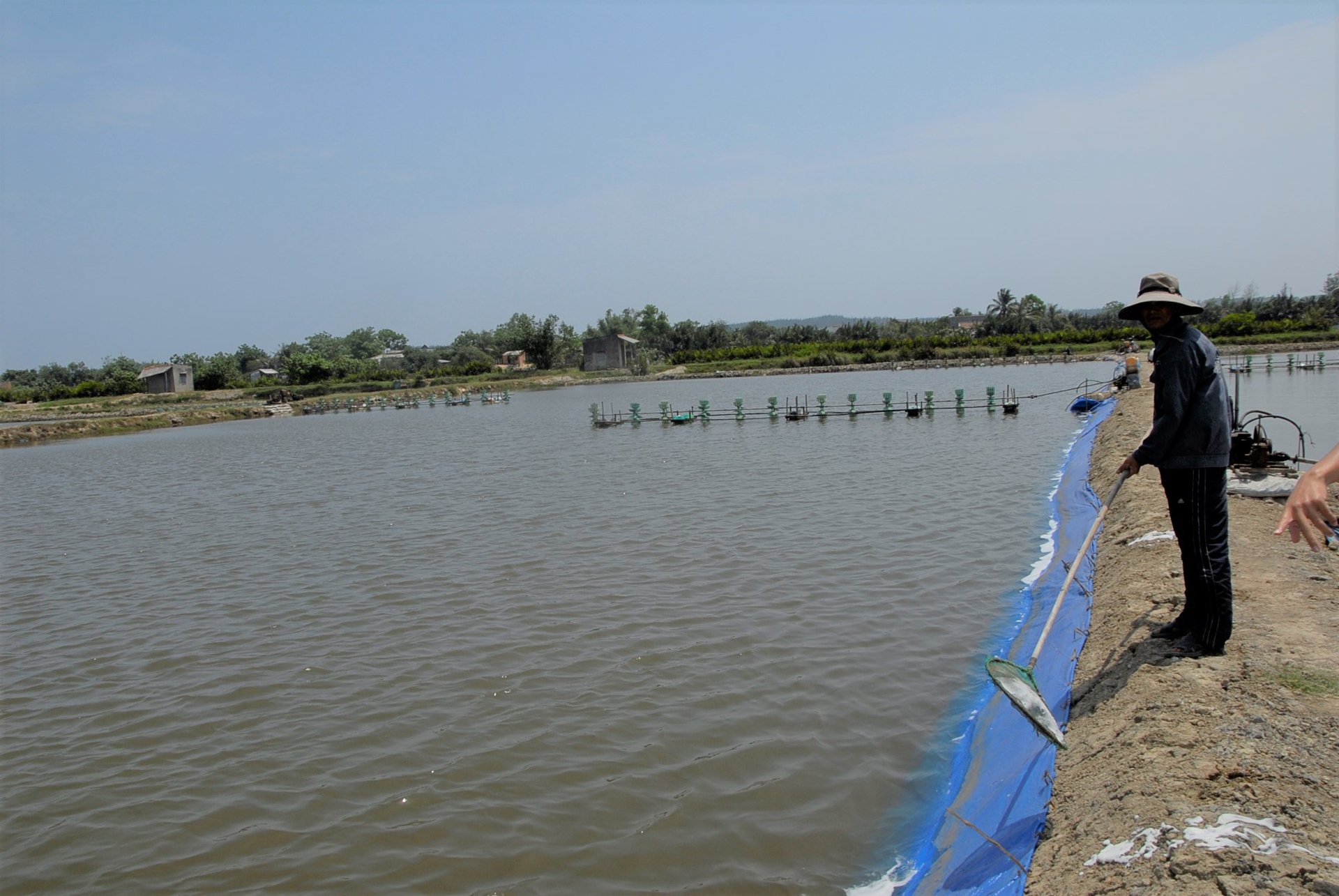
Breeding of the brackish water shrimp harvest 1/2023 is threatened by severe heat. Picture: VDT
According to the forecast of Binh Dinh Hydrometeorological Station, the average temperature in this province from March to August 2023 is usually 0.5 degrees Celsius higher than the average of many years in the same period of the same period, the total rainfall is about 0.5 degrees Celsius. tends to be 5-10% higher than the average for many years over the same period, and even higher in some places.
In order to limit the negative impact caused by weather fluctuations, the Binh Dinh Fisheries Sub-department has issued a document requesting the relevant authorities of aquaculture places to acquaint farmers with the implementation of technical instructions for dealing with hot weather and them to guide Also, the hot weather is cyclical, so aquaculture farmers in Binh Dinh have also been actively responding.
Due to the persistent cold in early 2023, this year’s 2nd lunar month for brackish shrimp farming is springing back, causing farmers to be slower than usual with crop 1 stocking. So if in previous years up to this point the harvest of the shrimp farmed in harvest 1 was essentially complete, this year’s harvest has only just begun.
Mr Pham Thanh Nhan, head of the aquaculture department of Binh Dinh Fisheries Sub-department, said that in hot weather, shrimp farmers need to raise the water level in the pond above 1.2m to reduce fluctuations. When the water level in the pond is raised, fluctuations in the water environment are reduced.
In addition, the heat will be very intense in Binh Dinh province from April to July 2023. Authorities recommend farmers to prevent diseases common in shrimp when environmental factors in the water source become more severe. So this is disadvantageous due to the influence of hot sun, especially hepatopancreas disease, to avoid damage.
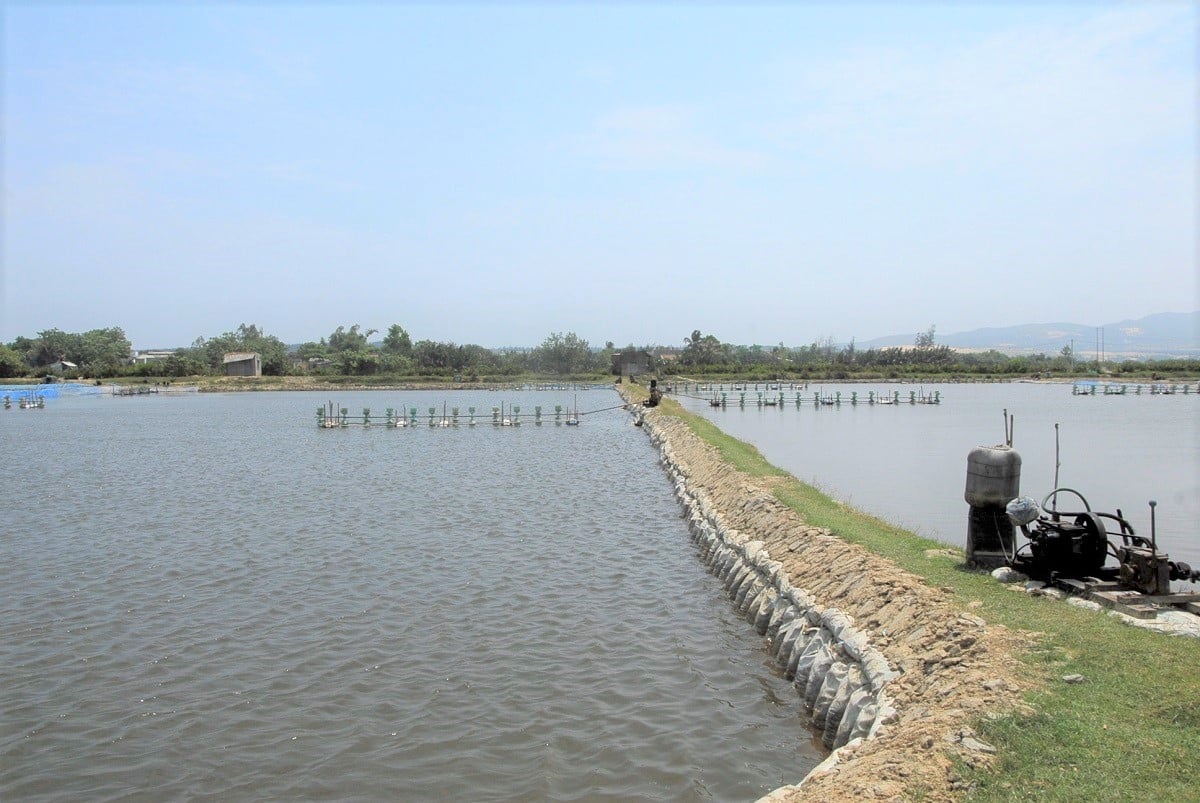
When the water level in the pond is raised, fluctuations in the water environment are reduced. Picture: VDT
According to Mr. Nhan, the Binh Dinh authorities not only raised the water level in the pond to the lowest level of 1.2m, but also instructed brackish shrimp farmers to increase the water fans to stabilize the temperature in the pond, thus reducing the phenomenon of the water avoid pollution. The water has temperature stratification and it is necessary to check regularly that the oxygen content is always high. When the sun is intense, farmers need to add vitamin C or multivitamins directly to the pond to increase the shrimp’s resistance.
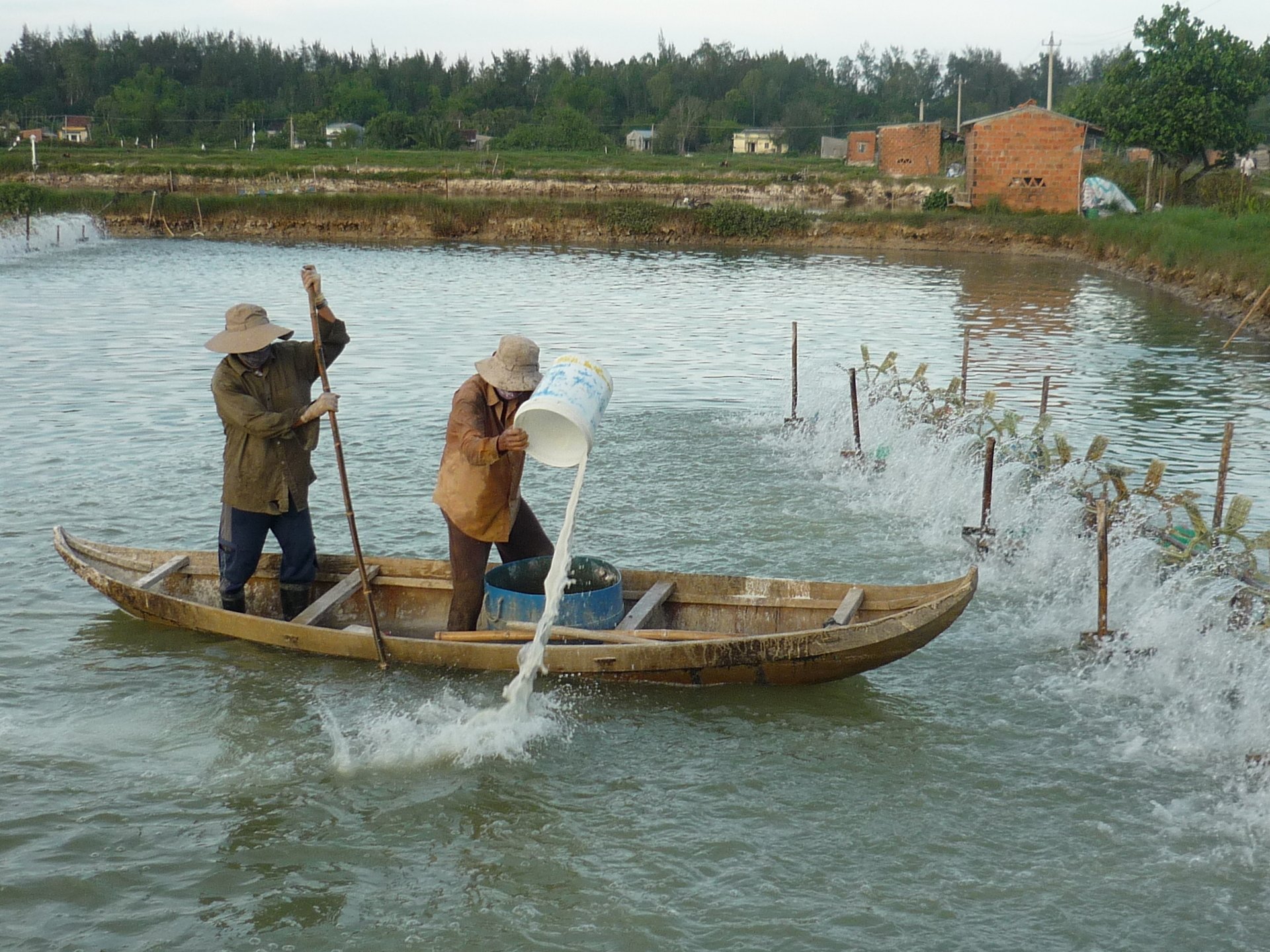
When the sun is intense, farmers need to add vitamin C or multivitamins directly to the pond to increase the shrimp’s resistance. Picture: VDT
At the same time, shrimp farmers need to regularly monitor environmental factors in the culture water source, such as algae, microorganisms, pH, salinity, temperature, ammonia, etc. in order to take timely action; Increase aeration in the pond to ensure adequate oxygen levels and increase the use of netting to reduce heat. In particular, it is necessary to limit the use of fishing nets and hoofs for shrimp control on hot days to limit shrimp shock, which can easily cause shrimp disease.
“During times when the temperature is between 26 and 30 degrees Celsius, we recommend farmers to feed shrimp with proper nutrition according to the process and avoid overfeeding. Because when it’s hot and the temperature rises, shrimp eat less. Therefore, only feed shrimp 50-80% of the feed amount compared to the normal state to avoid excess feed,” said Mr. Nhan.
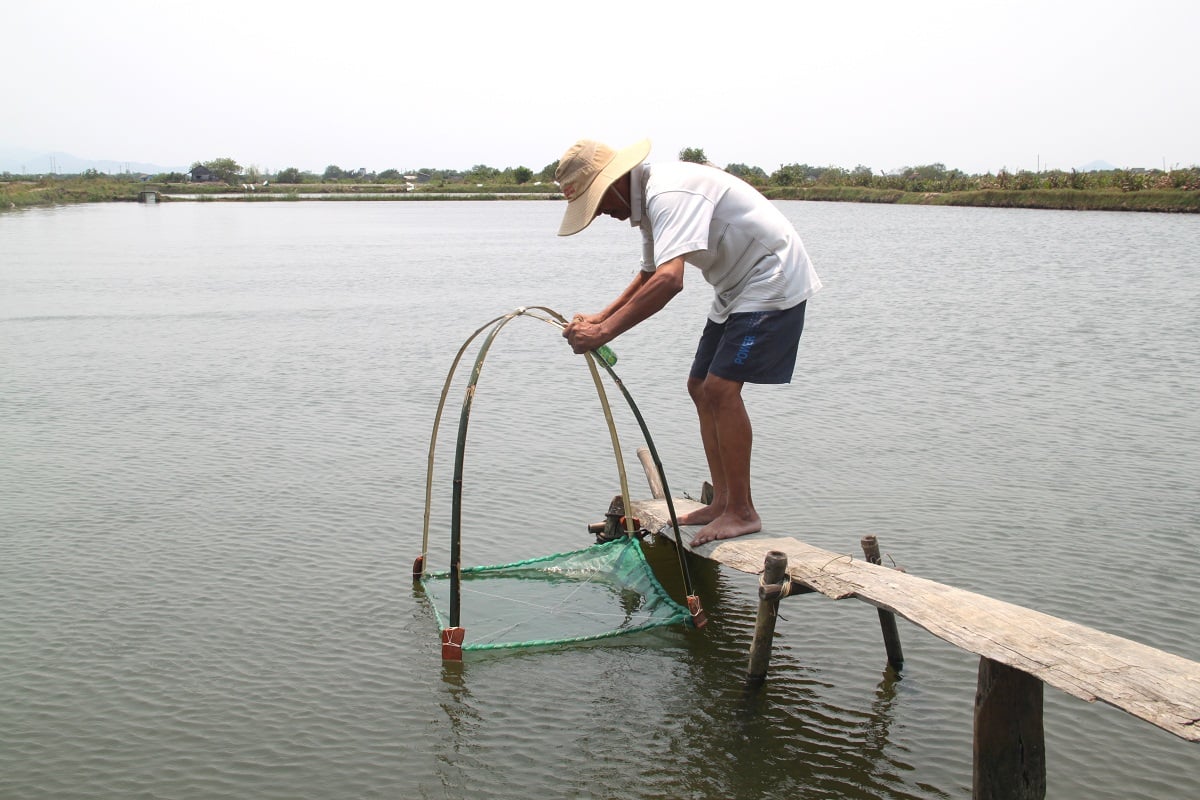
On hot days, farmers have to limit the use of fishing nets and hooves for shrimp control. Picture: VDT
Mr. Pham Quang An, deputy chief of the Department of Agriculture and Rural Development of Tuy Phuoc District, said the place with the largest brackish water shrimp farming area in Binh Dinh, the functional branch of that district, guides shrimp farmers when the pond shows signs of disease. If they are washed ashore in large numbers or die on the bottom, they must immediately report to the local fisheries workers to promptly notify the relevant authorities to treat them according to the procedure and take timely solutions to reduce damage to the cause agricultural households and stabilize the environment.
“For the brackish water shrimp farming areas under the improved extensive method, we recommend farmers to strengthen the pond banks to prevent water loss and widen the ditch area in the middle of the pond to create a large space for shrimp. Work.” Specifically, not to monoculture with black tiger shrimp, but to diversify livestock species with economic value, not to compete for food and habitat with shrimp such as redhead fish, sour fish, tilapias, crabs… to reduce epidemics and minimize pollution, to reduce risks,” said Mr. Pham Thanh Nhan, Head of Aquaculture Department of Binh Dinh Fisheries Sub-department.

